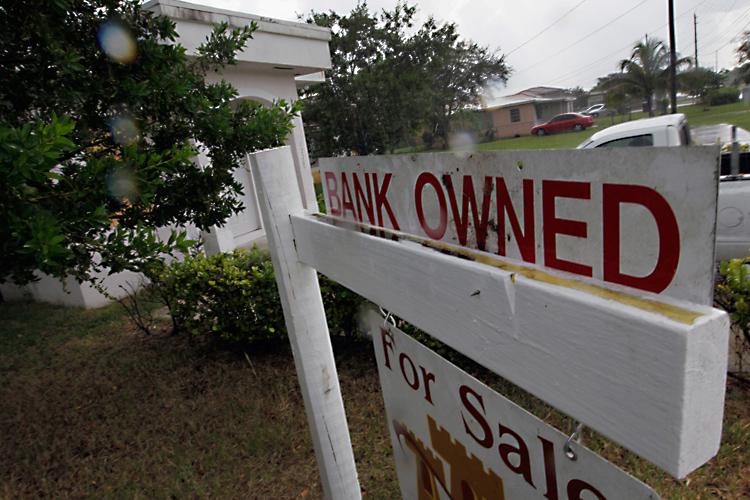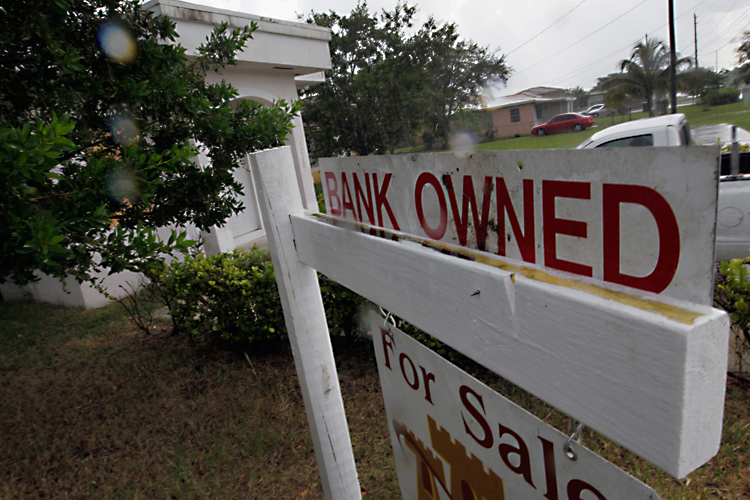Real estate gurus and economists keep repeating over and over that without a real estate market and housing price recovery, America’s economic malaise will linger on.
“As a past ’real estate man,' (in my life), I’ve never seen an economic recovery unaccompanied by a real estate market recovery,” said Michael Lombardi, a stock market expert and owner of Lombardi Publishing Corp., in an article on the Profit Confidential website on Feb. 2.
December 2011 new house sales in the United States, despite unprecedented low interest rates, were down 2.2 percent from November 2011 sales and down by 7.3 percent from December 2010 sales, according to estimates released by the U.S. Census Bureau and the Department of Housing and Urban Development on Jan. 26.
Presenters at the recent Pacific Coast Builders Conference suggest that a housing recovery is not in the air until 2013, given the many distressed properties in the market, according to Teresa’s Real Estate Update on the realtydirect website.
The large foreclosed homes inventory is reduced by about 500,000 houses annually. Given the present inventory level of foreclosed homes, it would take about 12 years to sell the entire inventory, unless the sales volume increases significantly, according to an article on the RealtyTrac website
In December 2011, a total of 224,394 houses were added to the foreclosed housing inventory and only 62,950 such homes were sold. In January 2012, 205,024 more houses were foreclosed and only 59,648 of such homes were sold, according to RealtyTrac.
Shadow Inventory Stalling Housing Recovery
“The term ’shadow inventory' has had various meanings and has been defined in different ways over the years,” according to an article on Realty Times, a real estate news and analysis website.
In its truest sense, the U.S. shadow inventory refers to distressed homes that are not for sale yet, but often include foreclosed homes that are recorded on the books of financial institutions, called REO (Real Estate Owned), as well as homes in which the owners are delinquent with their mortgage payment by 90 or more days.
It is important to note that a shadow inventory does not include homes in which the owners are one or two months past due in their mortgage payments, but homes that are slated to be included in the foreclosed home inventory soon.
According to the Banking My Way website, the shadow inventory presently consists of 4.5 million homes and will take several years to sell, although no specific number of years was provided.
The foreclosure inventory numbers differ considerably from each other. According to Lender Processing Services Inc., 6.3 million houses were delinquent or in foreclosure and another 2.2 million were not yet counted in the foreclosed homes inventory at the end of October 2011.
Laurie Goodman, mortgage analyst at Amherst Holdings LLC, suggested a shadow inventory of more than 7 million homes in a Jan. 17 MSN article. In a Wall Street Journal article on Nov. 11, 2011, she talked of a shadow inventory of between 8.2 million and 10.3 million.
Others, such as Barclays Capital, came in on the low end, with Barclays suggesting 3 million distressed homes, Core Logic indicating 1.6 million distressed homes, and Capital Economics suggesting 4.3 million distressed homes, according to the November 2011 Wall Street Journal article.
“My analysis comes up with a total close to that of Goodman’s range, 9.8 million using a narrower definition than Goodman’s of what constitutes shadow inventory,” said Michael Olenick, a foreclosure expert, in an article on the naked capitalism website.
The difference in estimates depends on the statistical model one uses to come up with the shadow inventory numbers. For example, CoreLogic uses credit scores for its estimates of shadow inventory.
Olenick believes that the numbers are far more than even he came up with “because evidence suggests that servicers are stalling the foreclosure process, not taking title to and selling these houses.” He believes that his reasoning and understanding of the shadow inventory is quite logical and can be gleaned from the length of time it takes for a foreclosed house to hit the market.
Reasons behind such delaying tactics are said to provide the lender with the chance to “avoid the write-offs of both the negative equity as well as the worthless second liens. More generally, it keeps the trillion dollar losses hidden,” according to Olenick.
Perpetuating Economic Stress
Real estate and financial experts suggest that the shadow inventory stalls economic progress as it produces “hidden pressure on housing prices and potential losses to banks and investors. This is a critical figure for policymakers and financial services industry executives,” Olenick said.
The shadow inventory depresses home prices even further to the point where an individual’s mortgage amounts to more than the price of the home, encouraging strategic defaults and increasing the shadow inventory even further.
A strategic default occurs when mortgage holders decide that it is of greater benefit to default, because the losses would be greater if they continued to pay the mortgages they took out from financial institutions.
Another dilemma is that not many people can afford to buy real estate and aren’t eligible for landing a loan in today’s depressed economy, an economy in which the unemployment rate in January was at 8.3 percent. This unemployment number does not include individuals who dropped out of the unemployment statistics because they lost faith in being able to land a job and are no longer receiving unemployment benefits.
“Tight credit restrictions are one of the biggest factors constraining that recovery. Thirty to 40 percent of the people who want to buy a house don’t qualify. Credit should be loosest at the bottom of a cycle,” said Ken Rosen, chair at the UC Berkeley’s Fisher Center, as quoted in Teresa’s Real Estate Update on the realtydirect website.
Home Prices at Risk in 2012
“My prediction at the beginning of 2011 was for home prices in the U.S. to decline between five percent and 10% in 2011. Final actual figures have not yet been released yet. ... For 2012, I’m predicting U.S. housing prices will fall again—about five percent this year,” said Lombardi in his Feb. 2 article on the Profit Confidential website.
Lombardi predicted continued falling house prices throughout 2012, given the many foreclosed homes, many of which have not hit the market yet and were not yet included in the foreclosure inventory.
A second problem is America’s consumer debt, which by November 2011 had reached 2.5 trillion, according to the Federal Reserve G19 report, released Jan. 9, 2012. Revolving debt, debt that has to be paid off on a monthly basis, generally known as credit card debt, amounted to 798 billion by the end of November 2011.
“Another factor that will pressure the U.S. housing market is the typical consumer having to pay down those debts and save, after the consumer credit-induced spending spree that occurred late in 2011,” Lombardi said.
Existing debt prevents many would-be house buyers from getting that loan, given financial institutions’ conservative lending practices.
“Over the last month, I’ve been talking about how consumer spending cannot be maintained at this pace, since it is based on credit—debt—and not an increase in wealth or an increase in wages,” Lombardi advised.






Friends Read Free